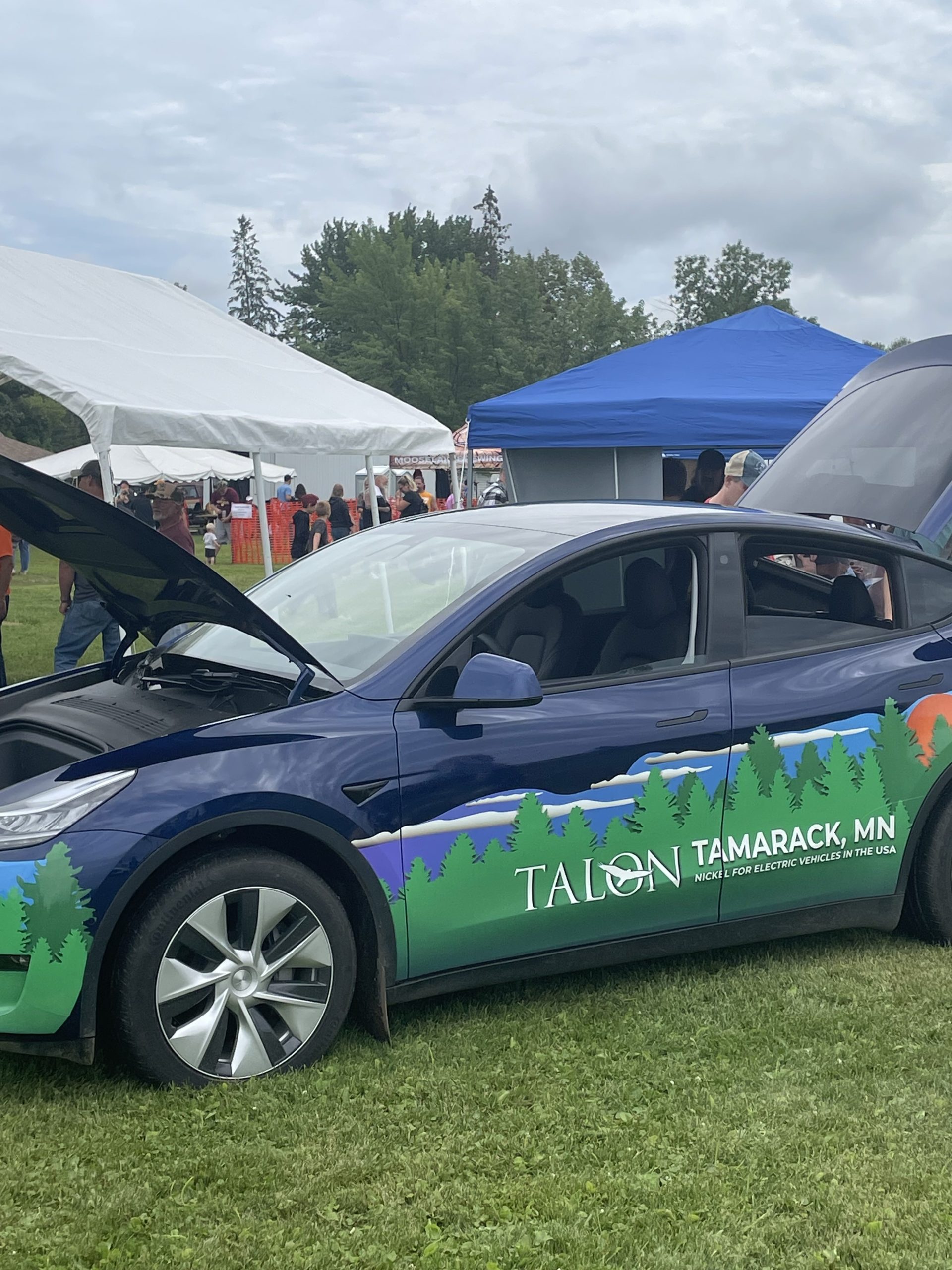
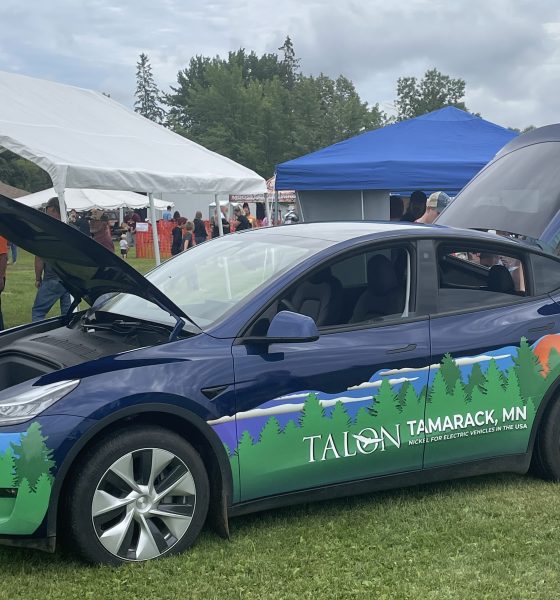
News
Tesla supplier Talon Metals on Manchin EV Bill, Tesla & more
Tesla supplier, Talon Metals (TLO.TO) gave Teslarati an exclusive interview and we talked about the Manchin EV Bill, Tesla and more.
I received some great feedback on one of my recent articles from Todd Malan, Chief External
Affairs Officer & Head of Climate Strategy at Talon Metals, one of Tesla’s key suppliers of nickel
and other battery minerals in the USA.
The two companies signed an offtake partnership in January of this year to supply nickel from Talon’s project in central Minnesota. Todd is based in Washington DC for Talon and therefore has a front-row seat to the wrangling among various parties regarding Senator Manchin’s new EV tax incentives in the Infrastructure Reduction Act of 2022.
As of this morning, voting was slated to begin today and the bill is expected to pass on a partisan line vote in the early morning of Monday. If the House passes it next week, it should be on President Biden’s desk by the end of the week.
Manchin’s EV tax credit proposal
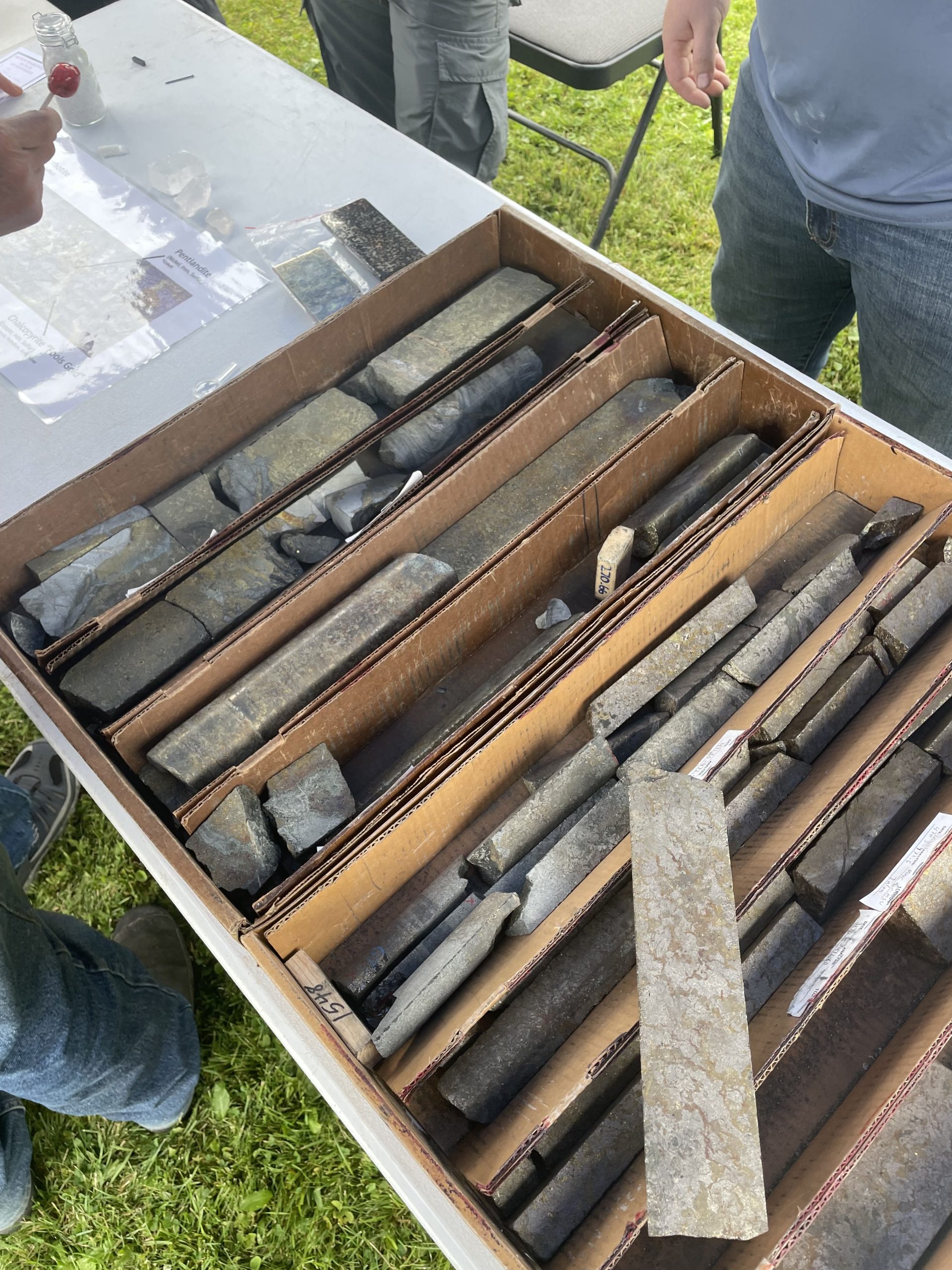
Todd shared his thoughts on Manchin’s EV tax credit proposal. On one hand, it’s breathtakingly generous in that it lifts all numerical limits on EVs that are eligible for the $7500 tax credit.
Previously, 200,000 cars per year for each nameplate. On the other hand, Manchin’s proposal sets some new eligibility parameters around the cost of the EV, the income level of the buyer, and the source of the battery raw materials (sourced from the US or countries that have a Free Trade
Agreement with the US).
As I reported last week, some automakers are unhappy with Manchin’s strings on the EV credit, others like Tesla seem to be taking more of a “can do” approach when it comes to the mineral content provisions.
Todd also walked me through the comprehensive approach that Senator Manchin took to
supporting domestic mining and mineral processing across the full bill.
So, Manchin isn’t just telling automakers to buy from domestic sources of minerals and metals from domestic sources and leaving it to them. He also added significant new government support to help the supply chain get up and running on an urgent basis.
The fact that he got commitments from Democratic leaders in Congress and President Biden to reform the permitting process in the US in separate legislation (not just for mines but for solar, wind and hydrogen too) is another signal of Manchin’s holistic approach to ramping up the full battery supply chain in the US and also rely on allies that happen to be mineral powerhouses like Australia and Canada.
Todd had a very optimistic view that all of these provisions, including the EV credit, will help the U.S. address its dependency on China for batteries and scale up its capability in battery mineral production.
The core of his view is that it will take partnerships between miners, automakers,
regulators, recyclers, and other parts of the supply chain to meet the Manchin content
requirements.
Todd thinks Tesla and Ford stand out as companies leading the way in this new
approach to supply chain security.
Some automakers are not happy with Senator Manchin’s EV tax credit proposal
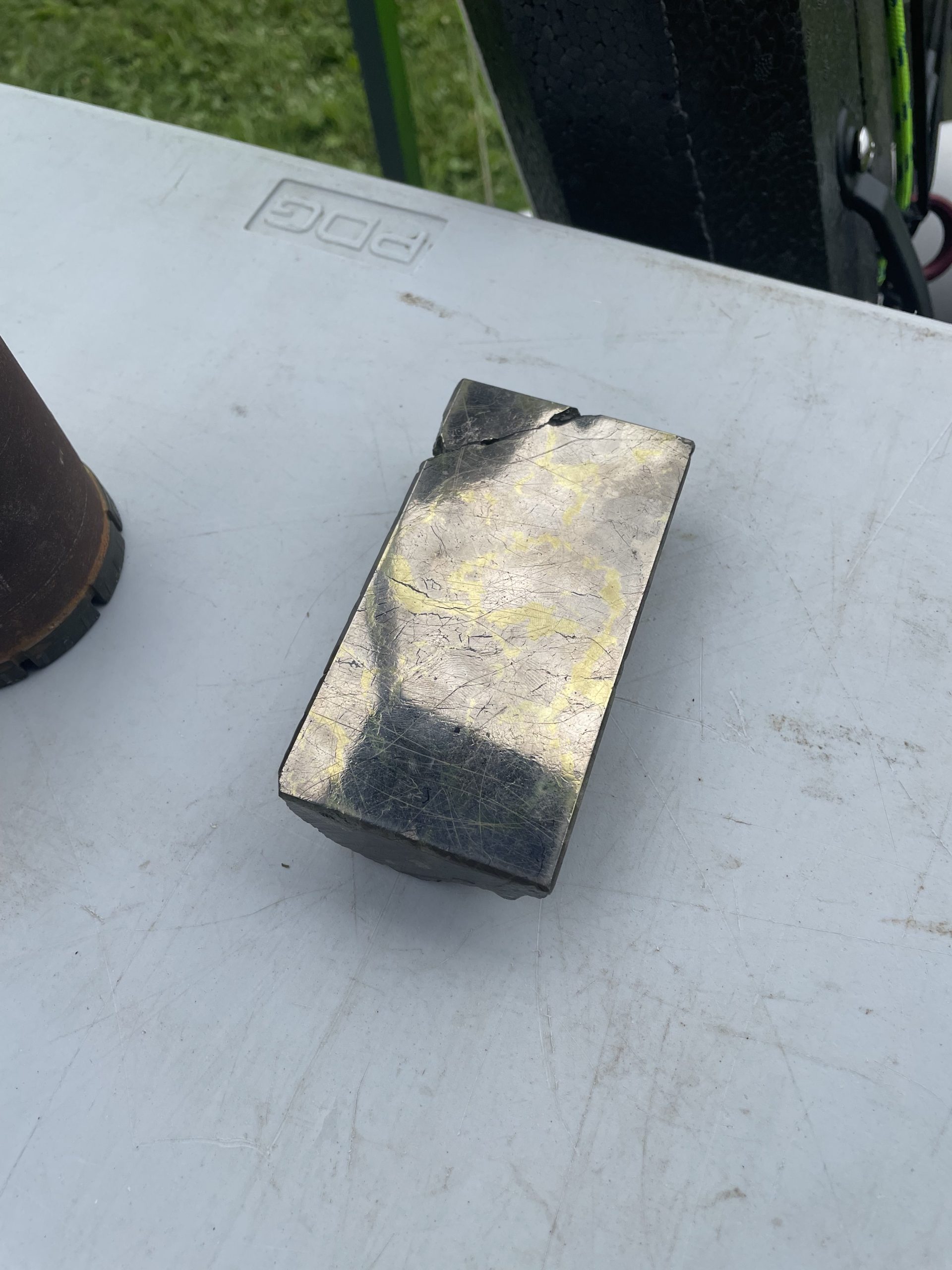
Todd read my article, Automakers are not too happy with Senator Manchin’s EV tax credit
proposal and pointed out that there was not a universal view among the automakers or the rest of the battery supply chain.
“Mazda and Rivian have been out-front in the media complaining about aspects of Senator
Manchin’s EV incentive proposal. I understand the concern that the timeline is very ambitious but on the other hand, Senator Manchin’s draft includes some of the world’s largest producers of battery materials: Canada, Chile, Australia, South Korea, etc.”
“Those countries that don’t have free trade agreements with the US, there is plenty of time (and now incentive) for them to negotiate agreements. Senator Manchin didn’t just confine the provision to the U.S., or even USMCA countries, but all countries that now or in the future have free trade agreements.”
“This is a balanced measure that will encourage domestic mining investment and development while also ensuring we can draw on our allies for secure supplies. It may not be the cheapest option for the automakers, but supply from this broad base of countries can be ramped up to meet the requirements.”
Todd pointed out that other parts of the auto lobby had a more nuanced approach to
Manchin’s proposal to support EV adoption. The Zero Emissions Transportation Association (ZETA), in which Tesla is a lead member, was quick to offer support for Manchin’s EV incentives.
Joe Britton, ZETA Executive Director was quoted in a number of media articles admitting that the domestic and ally content provisions would be hard to meet but that they could be met.
“If you look at the landscape as it exists today, it’s a challenge, but it’s doable,” said Joe Britton, the head of the Zero Emission Transportation Association, which advocates for EV adoption, told Bloomberg.“We can meet these metrics.”
Britton also has been praising the Manchin bill for what it will do for EV adoption. He told
News12 Westchester that he hopes the rebate can entice more people to purchase EVs. Britton said:
“In most areas of the country, especially the Northeast, it is five to six times more expensive to drive your vehicle on gasoline than it is by electricity. So, by making these vehicles more affordable on the front end, you’re really driving down that total cost of ownership”
As with most people that are involved with Tesla as suppliers, Malan was extremely careful to not speak for Tesla or speculate on their positions. But I realized that someone glancing at the headlines without reading through the article might assume that Tesla was of the same view as the legacy auto industry.
We all know Tesla prefers to speak for itself and Elon Musk shared a thought about Senator Manchin on Twitter yesterday. Although many were wondering what his tweet meant, I think it’s pretty clear he thinks Manchin is doing something right.
Thank goodness for Senator Manchin
— Elon Musk (@elonmusk) August 5, 2022
Partnerships across the value chain will be key
Todd pointed out to the Detroit News yesterday that it will take a range of
partnerships to meet the Manchin goals. He pointed out that Tesla and Talon have explicitly described their supply relationship as a partnership. Tesla is working with its suppliers.
Todd told me that everyone will need to work together to meet these goals.
“We need everyone working together to meet these ambitious goals in the Manchin bill.
Mining is the front end of the supply chain and it takes enormous knowhow, capital, and risk tolerance to discover, delineate, permit, construct and then safely operate a mine to supply battery minerals.”
“Processing has been the Achilles heel of the supply chain in the U.S. Luckily. Congress just provided new resources to address this issue in the bipartisan infrastructure bill. Everybody’s going to have to work together. The auto manufacturers, the miners, the people that do processing, and government at state and federal level.”
“Senator Manchin and others in Congress realize that governments are going to have to focus on improving the permitting process – not to cut corners in environmental protections but to make the process more certain, efficient, and reliable.”
“Not just for mines, processing or even EV battery factories – but also solar, wind, hydro and hydrogen projects. We can not afford a disorganized, uncoordinated, and inefficient regulatory process that causes unnecessary delays in progress. We need all these projects to come online to address the climate crisis while also ensuring we protect the environment through science-based permitting.”
Talon Metals on Senator Manchin’s proposal.
I’ve seen a lot of mixed feedback on Senator Manchin’s proposal. As noted in my earlier article, many automakers like Mazda and Rivian are lobbying hard to water it down. Not as much has been heard from the companies that source raw materials like nickel and lithium in the United States. So, I asked Todd to share his take–and that of Talon Metals.
“From the standpoint of a company that’s trying to build a responsible nickel mine in
Minnesota, we think that Senator Manchin has struck a good balance in this bill. First, it provides the most generous set of incentives for EV adoption ever enacted in law.
“It also encourages auto companies to work with domestic mines and mines in allied countries like Australia, Canada, and Chile and it provides some time for projects to ramp up. It also provides time for countries that don’t have FTAs to engage with the US and negotiate. Yes, it is a stretch goal but that seems appropriate given the climate crisis and our dependency on countries like China and Russia for battery supplies.”
“This is a carefully balanced bill that does push everyone to rise to the occasion. But that is appropriate because we want to create high-quality jobs in America as part of the energy transition and we don’t want to rely on Russia and China for the supply chain of battery minerals. It’s a matter of national security.”
How can automakers better work with their suppliers?

I asked this question because if automakers truly want to “get aggressive”; as Senator Manchin challenged them to do, then perhaps they need to take a page from Tesla and other leaders’practices.
“Having a Tesla off-take agreement in place has changed the perception of our project in the community. It’s very credentializing and our employees are proud of the partnership. People clearly understand that our proposed mine has a purpose: to supply nickel for the EV battery supply chain and contribute to the energy transition. This has helped shape how people perceive the project. It has a purpose and an important one.”
“Many of the large automakers are helping supply partners apply for some of the significant new funding opportunities being made available through the Bipartisan Infrastructure Bill. The Department of Energy is expected to give out over $1.8 billion in funding from that legislation this fall. This is another example of how the end-users can help the front end of the supply chain for battery materials.”
Todd commented that many auto companies are having a tough time adjusting to the new
reality of scarce commodities.
“They used to only focus on price and quality with a yearly focus on driving down the price. It’s a whole new game now, as they learned in the chip crisis. Some are still adjusting their mindset to scarcity and competition for supply.”
“It requires a change in mindset. No longer can the big auto company demand ever-lower price year over year. Smart end users have changed their mindset to partnership. That means understanding their partners’ issues, helping them to maximize productivity, access newtechnology, ramp up production, improve quality, and provide support during the permittingprocess or help obtain government funding.”
“This is the future, true partnership in the supply chain, from mine to cathode to recycling. That is how we meet Senator Manchin’s challenge and strengthen the supply chain for battery production.”
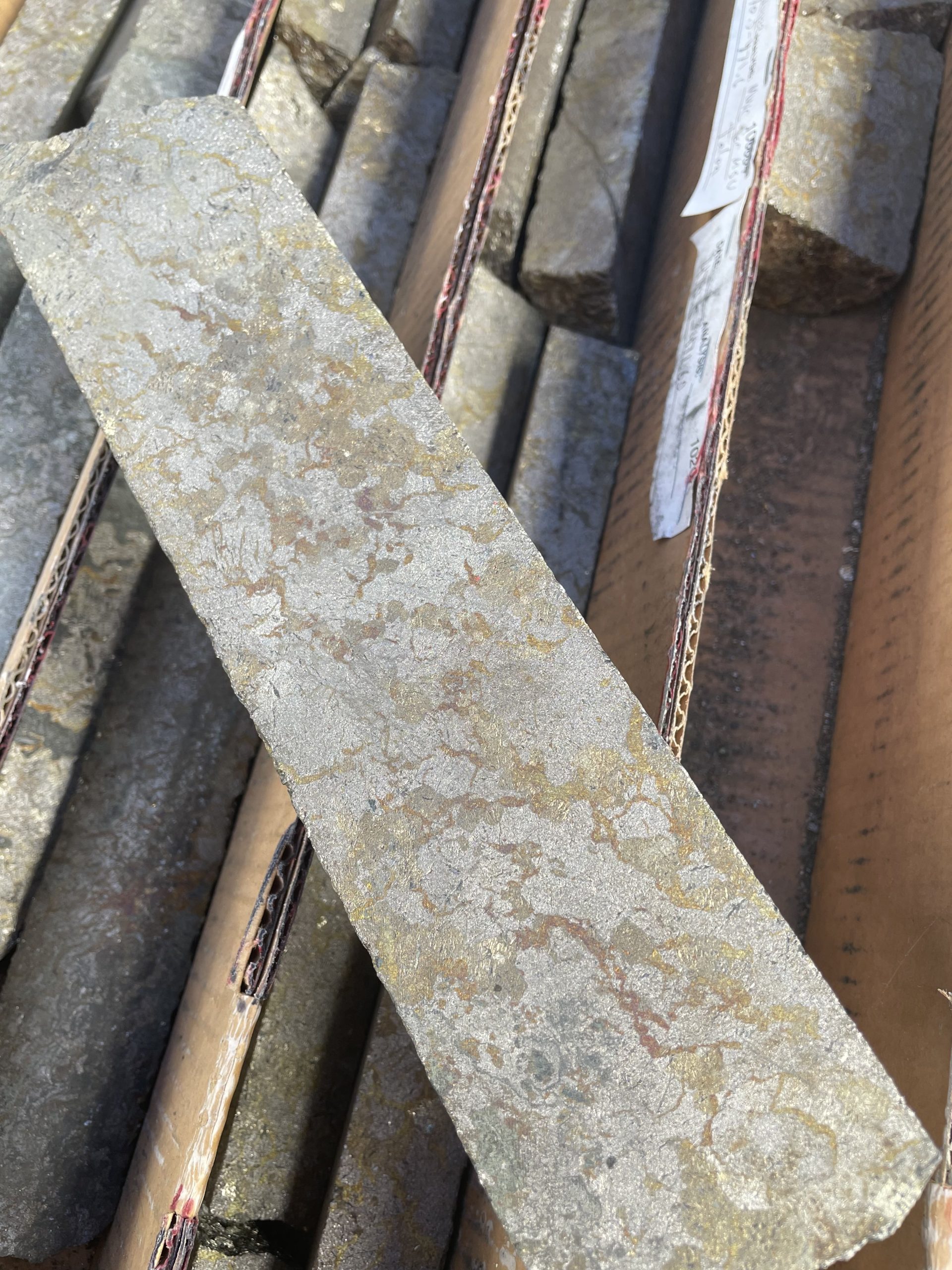
Todd didn’t come out and say it directly, but it came through in the way he talked about the Tesla. Yet again, Tesla is leading the industry in terms of securing supply from the right countries to feed its factories but also leading practices in working in partnership with key suppliers.
Knowing that I love cool rocks, Todd invited me up to Minnesota to check out what Talon is doing at Tamarack and show me some beautiful nickel samples. Todd also told me about Minnesota’s famous burger concoction, The Juicy Lucy.
Disclaimer: Johnna is long Tesla.
I’d love to hear from you! If you have any comments, concerns, or see a typo, you can email me at johnna@teslarati.com. You can also reach me on Twitter @JohnnaCrider1

News
Tesla is making a change to its exterior cameras with a potential upgrade
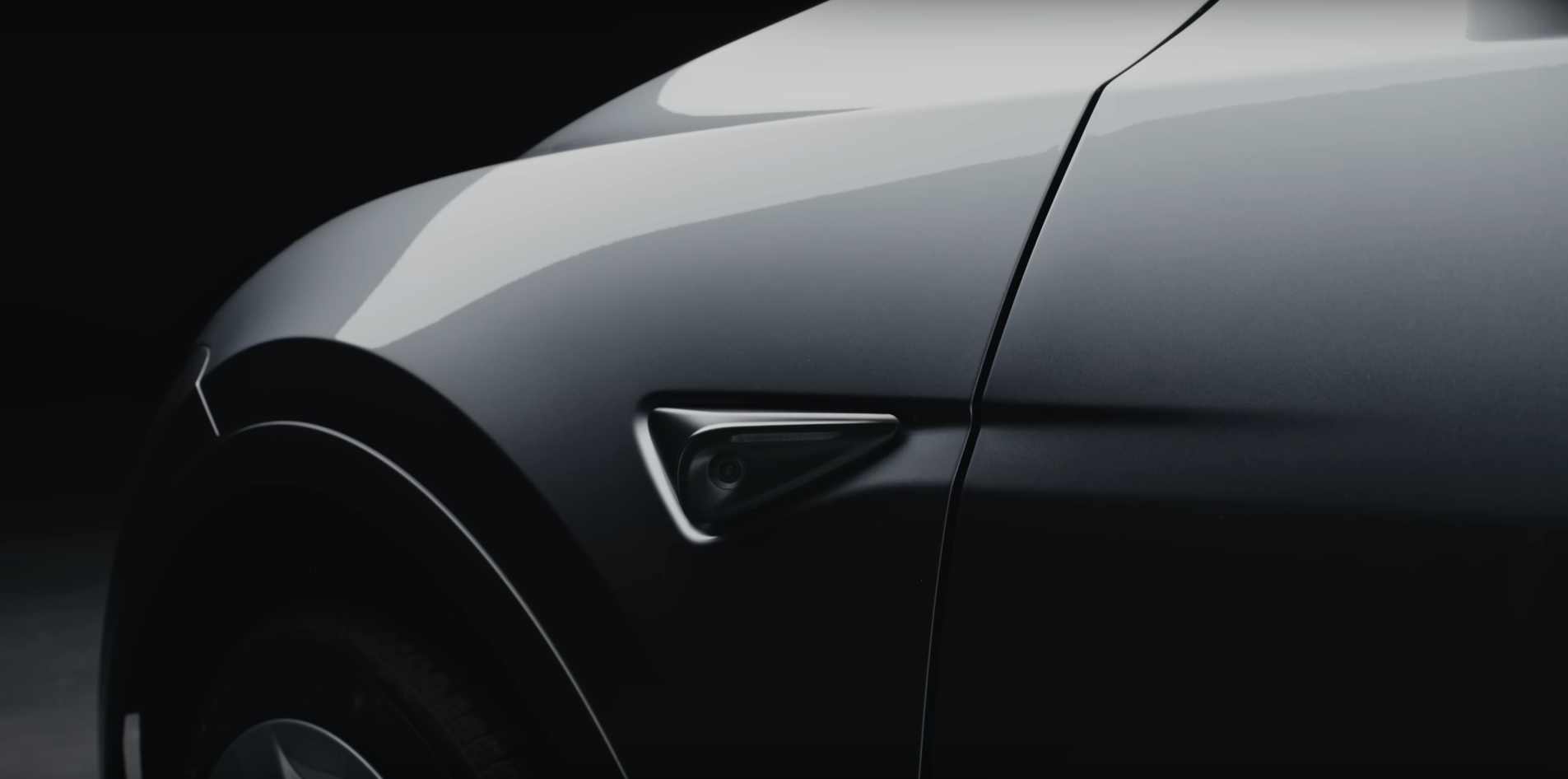
Tesla appears to be making a change to its exterior side repeater cameras, which are used for the company’s Full Self-Driving suite, and other features, like Sentry Mode.
The change appears to be a potential upgrade in preparation for the AI5 suite, which CEO Elon Musk said will be present on a handful of vehicles next year, but will not be widely implemented until 2027.
Currently, Tesla uses a Sony sensor lens with the model number IMX963, a 5-megapixel camera with better dynamic range and low-light performance over the past iteration in Hardware 3 vehicles. Cameras in HW3 cars were only 1.2 megapixels.
However, Tesla is looking to upgrade, it appears, as Tesla hacker greentheonly has spotted a new sensor model in its firmware code, with the model number IMX00N being explicitly mentioned:
Looks like Tesla is changing (upgrading?) cameras in (some?) new cars produced.
Where as HW4 to date used exterior cameras with IMX963, now they (might potentially) have something called IMX00N— green (@greentheonly) December 1, 2025
Sony has not announced any formal specifications for the IMX00N model, and although IMX963 has been used in AI4/HW4 vehicles, it only makes sense that Tesla would prepare to upgrade these external cameras once again in preparation for what it believes to be the second hardware iteration capable of fully autonomous self-driving.
Tesla has maintained that AI4/HW4 vehicles are capable of self-driving operation, but AI5 will likely help the company make significant strides, especially in terms of overall performance and data collection.
Tesla last updated its exterior cameras on its vehicles back in early 2023, as it transitioned to the 5-megapixel IMX963. It also added additional cameras to its vehicles in January with the new Model Y, which featured an additional lens on the front bumper to help with Full Self-Driving.
Tesla’s new self-driving computer (HW4): more cameras, radar, and more
News
Tesla Model Y Standard Full Review: Is it worth the lower price?
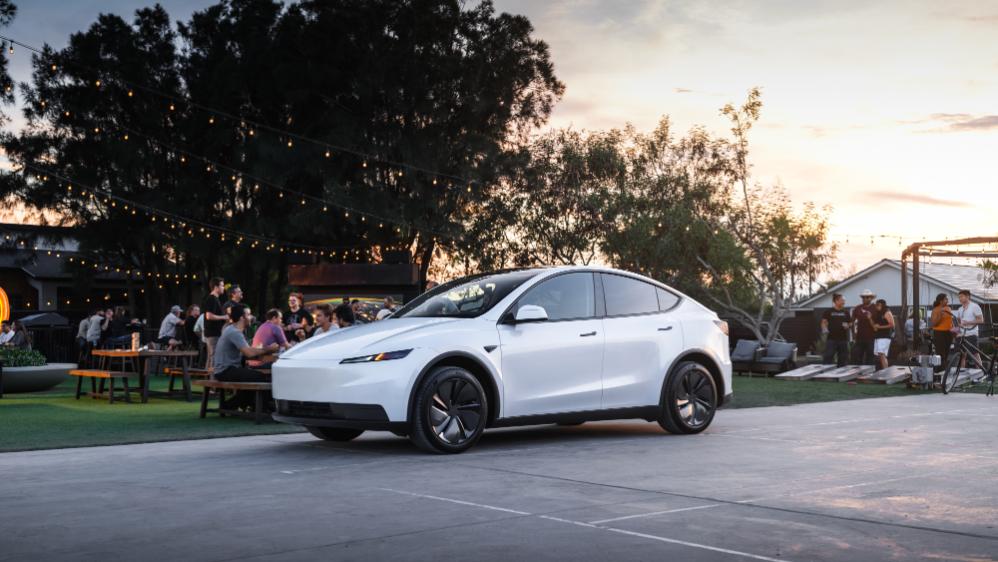
Tesla launched the Model Y Standard as an attempt to offer affordable electric vehicles to consumers now that the $7,500 EV tax credit is gone. We were able to spend four days with the car, and it was more than enough time to determine whether or not the car was worth the $9,000 discount compared to the Premium All-Wheel-Drive configuration, which is what I drive daily.
The Model Y Standard was stripped of some of the features that are present in the Premium trims of the Model Y: no glass roof, a sound system with roughly half the speakers, fewer acoustic-lined glass windows, less storage, and less functionality from an interior standpoint.
However, there are some real advantages to purchasing a Standard Model Y, and there are a handful of situations where this car would be well-suited.
Do I think it is worth the lower price? Well, I’ll get to that later in this article.
Initial Thoughts
In my first impressions review of the Model Y Standard, I talked about the face-value differences between my Model Y Premium and the new, more affordable trim. You will first notice the lack of storage between the front two seats, as the cupholder and additional storage bin sliding doors are void. You still get the cupholders, but they are exposed, which isn’t a huge deal, but it definitely takes away from the sleek look the Premium trim offers.
Additionally, the textile seats replace those of the vegan leather that is available in the upper-level trims. I mentioned previously that I could take or leave the vegan leather for the textile seats, as they are easy to clean, quick drying, and hide oils from your skin much better than leather does.
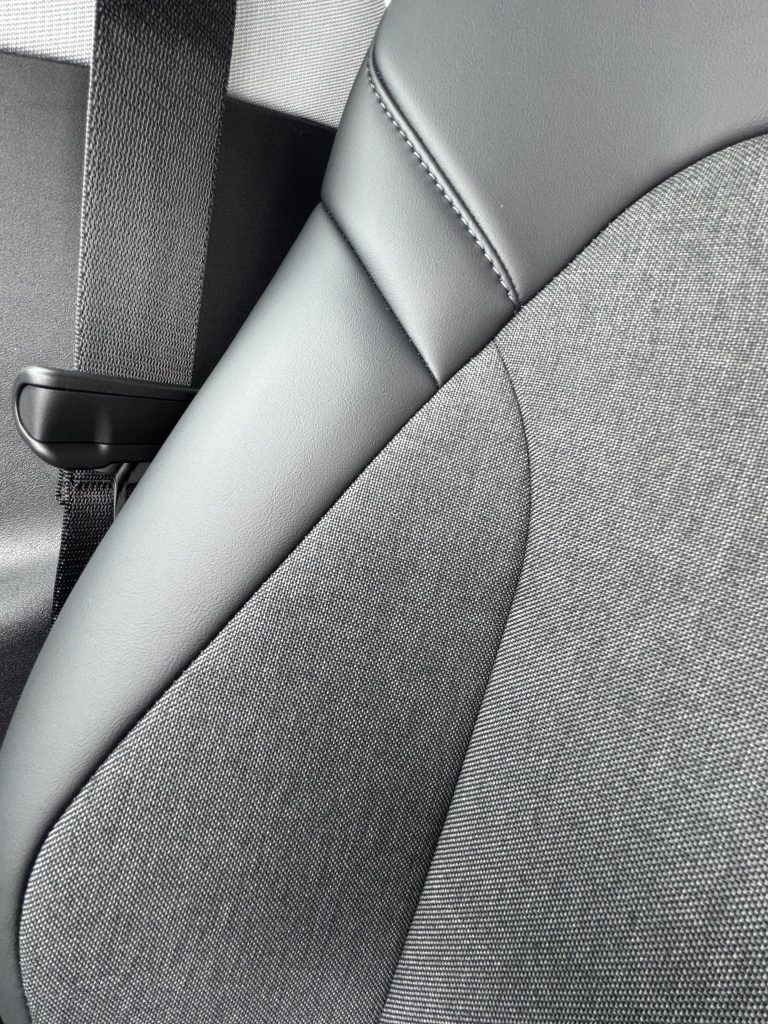
However, there comes one big sacrifice that I have been spoiled by, as the textile seats are not ventilated, so say goodbye to cooling your keister in the Summertime.
The lack of a glass roof is something many owners might not even notice. However, I have been spoiled by the glass roof in my car, and I look out of it every time I’m in my car. It is one of my favorite features, without a doubt. While it would not be a dealbreaker for me, it would be something I would miss terribly.
Things I Noticed After Several Days
Cabin Noise
One of the biggest things I noticed after the first two days in the Model Y Standard is that the cabin is much louder than the Premium. This is because Tesla did not acoustically line all of the glass in the Standard configuration, as it did in the Premium. The side windows are not treated, just the windshields. Therefore, you notice the noise level in the cabin is louder than in the Premium.
If you had not been driving in a Premium trim for a few months, you might not notice it. However, it is something that is a big sacrifice when moving to a different trim level, especially one that is less premium than what you might currently drive.
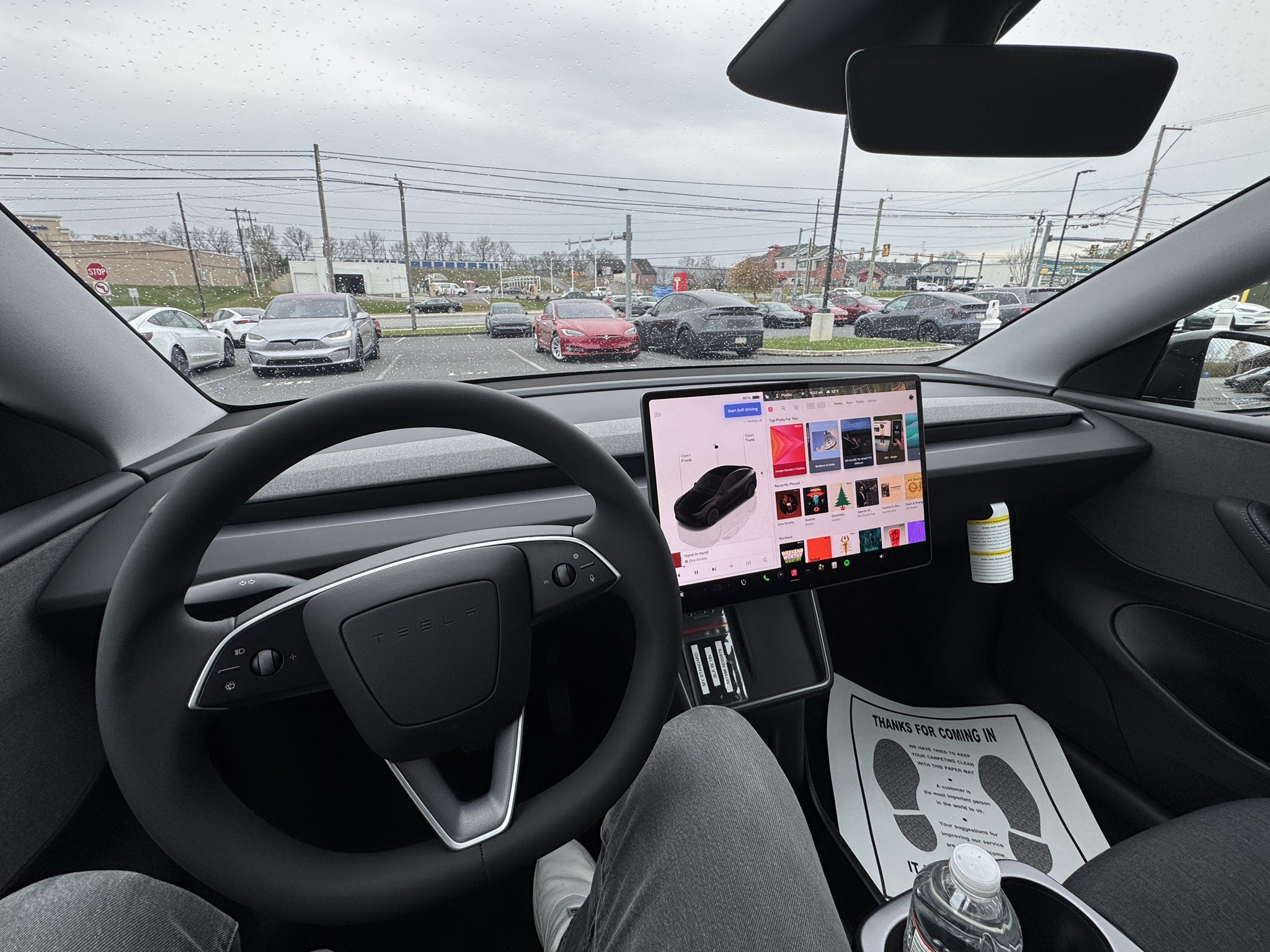
I have always been so shocked at how amazingly quiet the Premium trim’s cabin is; my Model Y is extremely peaceful, even when I’m sitting in bumper-to-bumper traffic, and people have modified mufflers and exhaust systems, tractor-trailers are going by, or crotchrockets are zipping by on the interstate.
This is a huge difference between the two cars, and it is something that is really hard to get used to. I know, first-world problems, right? But when you’re paying between $39,990 and $48,990 for a car, those little things truly do matter.
Stereo System Differences
Another thing I was very aware of was how weak the sound system is. I think if I had bought a Standard Model Y, I would have looked at having the speakers and subwoofers upgraded; I was almost disappointed in how much of a change it was between the two cars.
When I finally picked up my Model Y Premium on Friday (which had been detailed by the awesome team at Tesla Mechanicsburg), the first thing I did was crank up the volume and listen to some music. I really missed having a premium sound system.
Ride Quality
There are virtually no differences between the two cars in terms of ride quality. They are both extremely fun to drive, and the suspension in the Model Y Standard feels perhaps a little bit stiffer than the Premium. Regardless, I didn’t truly notice all that much of a change.
Driving this car around windy roads and tight turns was just as fun as my Model Y Premium. It was a blast to test out, and the slight change in feel was welcome. It’s always fun to drive new cars.
Performance
This is the first EV I’ve ever ridden in where I did not feel that awesome sensation of instant torque. It’s still a quick car, but it is missing that pep in its step that many of us have become accustomed to.
If you want to get someone’s true reaction to EV acceleration, let me just put it this way: This is not the car to do it in.
Some Little-Known Facts About the Model Y Standard
Most of us know that the Model Y Standard has a glass roof, but it is opaque, so even if you took out the headliner, you still would not see out of it. However, there is an interesting little tidbit from a Service perspective that does not make much sense.
If the Model Y glass roof cracks or is broken and needs to be replaced, Service is required to pull off the entire headliner and topside interior to access the glass. It cannot be replaced from the outside. In the Premium, because the glass is exposed, it is a much simpler process to replace the glass. This was an interesting thing I learned.
Additionally, the seat controls are only available on the center screen, which makes it difficult to adjust the seat if you are larger than the person who sat in the car previously. In order to adjust the seat, you’ll have to lean over the chair, access the controls from the screen, and adjust it manually before getting in.
Is the Tesla Model Y Standard Worth the Cheaper Price?
For an additional $9,000 to buy the Model Y Premium AWD, you would get a more capable powertrain, a quieter cabin, better performance, an upgraded interior, more storage, a better sound system, and more luxury features.
To me, the Standard is a car that seems extremely ideal for a teenager’s first vehicle (I got a $1,500 1998 VW Jetta K2 with 200,000 miles when I was 16), or a fleet vehicle. This would be the perfect car for salespeople to use: it does not have all the bells and whistles, it is efficient, and it is just what is needed to drive around to meetings.
For a personal car, it really depends on what you think you need. Admittedly, I’ve been spoiled by the Premium configuration, and personally, I wouldn’t go down to the Standard after owning a Premium trim.
News
Tesla’s new Holiday perk is timed perfectly to make FSD a household name
Tesla AI4 owners get FSD (Supervised) through Christmas, New Year’s Eve and well into the post-holiday travel season.
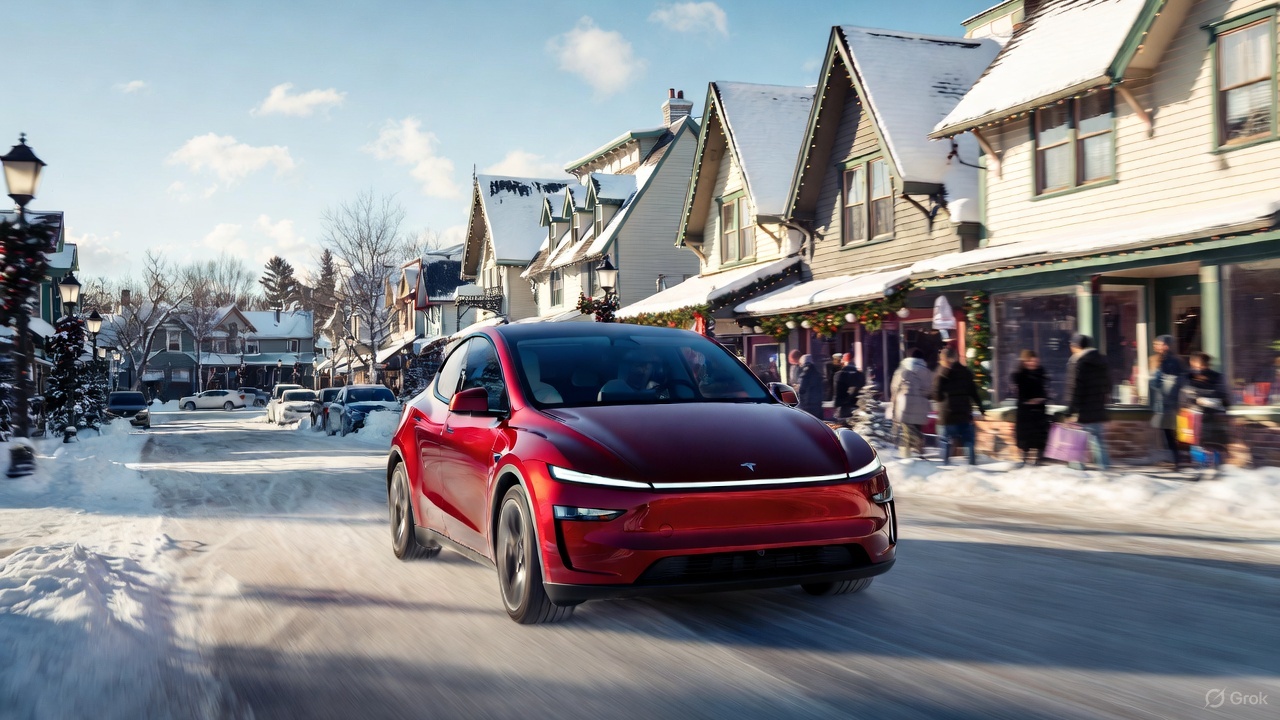
Tesla quietly rolled out a free Full Self-Driving (Supervised) trial for roughly 1.5 million HW4 owners in North America who never bought the package, and the timing could very well be genius.
As it turns out, the trial doesn’t end after 30 days. Instead, it expires January 8, 2026, meaning owners get FSD (Supervised) through Christmas, New Year’s Eve and well into the post-holiday travel season. This extended window positions the feature for maximum word-of-mouth exposure.
A clever holiday gift
Tesla watcher Sawyer Merritt first spotted the detail after multiple owners shared screenshots showing the trial expiring on January 8. He confirmed with affected users that none had active FSD subscriptions before the rollout. He also observed that Tesla never called the promotion a “30-day trial,” as the in-car message simply reads “You’re Getting FSD (Supervised) For the Holidays,” which technically runs until after the new year.
The roughly 40-day period covers peak family travel and gatherings, giving owners ample opportunity to showcase the latest FSD V14’s capabilities on highway trips, crowded parking lots and neighborhood drives. With relatives riding along, hands-off highway driving and automatic lane changes could become instant conversation starters.
Rave reviews for FSD V14 highlight demo potential
FSD has been receiving positive reviews from users as of late. Following the release of FSD v14.2.1, numerous owners praised the update for its smoothness and reliability. Tesla owner @LactoseLunatic called it a “huge leap forward from version 14.1.4,” praising extreme smoothness, snappy lane changes and assertive yet safe behavior that allows relaxed monitoring.
Another Tesla owner, @DevinOlsenn, drove 600 km without disengagements, noting his wife now defaults to FSD for daily use due to its refined feel. Sawyer Merritt also tested FSD V14.2.1 in snow on unplowed New Hampshire roads, and the system stayed extra cautious without hesitation. Longtime FSD tester Chuck Cook highlighted improved sign recognition in school zones, showing better dynamic awareness. These reports of fewer interventions and a more “sentient” drive could turn family passengers into advocates, fueling subscriptions come January.









